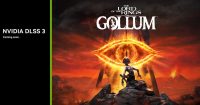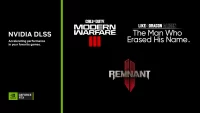(Auszug aus der Pressemitteilung)

UL Solutions is excited to announce that in today’s update to 3DMark, we’re adding DLSS 3 and DLSS Frame Generation support to the NVIDIA DLSS feature test.
The 3DMark NVDIA DLSS feature test lets you compare performance and image quality with and without DLSS processing. If you have a new GeForce RTX 40 Series GPU, you’ll also be able to compare performance with and without DLSS 3.
You can choose to run the NVIDIA DLSS feature test using DLSS 3, DLSS 2 or DLSS 1. DLSS 3 includes DLSS Frame Generation, and you can choose between three image quality modes: Quality, Performance and Ultra Performance. These modes are designed for different resolutions, from full HD up to 8K.
DLSS Frame Generation uses artificial intelligence (AI) to boost frame rates by generating additional high-quality frames, all while optimizing responsiveness with NVIDIA Reflex. DLSS Frame Generation uses the new Optical Flow Accelerator in GeForce RTX 40 Series GPUs along with NVIDIA Tensor Cores.
The NVIDIA DLSS feature test is based on the 3DMark Port Royal ray tracing benchmark. The test runs in two passes. The first pass renders Port Royal with DLSS disabled to measure baseline performance. The second pass renders Port Royal at a lower resolution, then uses DLSS processing to create frames at the output resolution. The result screen reports the frame rate for each run.
DLSS is a proprietary NVIDIA technology. You need an NVIDIA graphics card and drivers that support DLSS to run the test. DLSS 3 requires a GeForce RTX 40 Series GPU. DLSS Frame Generation requires a GeForce RTX 40 Series GPU and Reflex SDK integration.





Neueste Kommentare
19. April 2024
17. April 2024
17. April 2024
5. April 2024
23. März 2024
22. März 2024